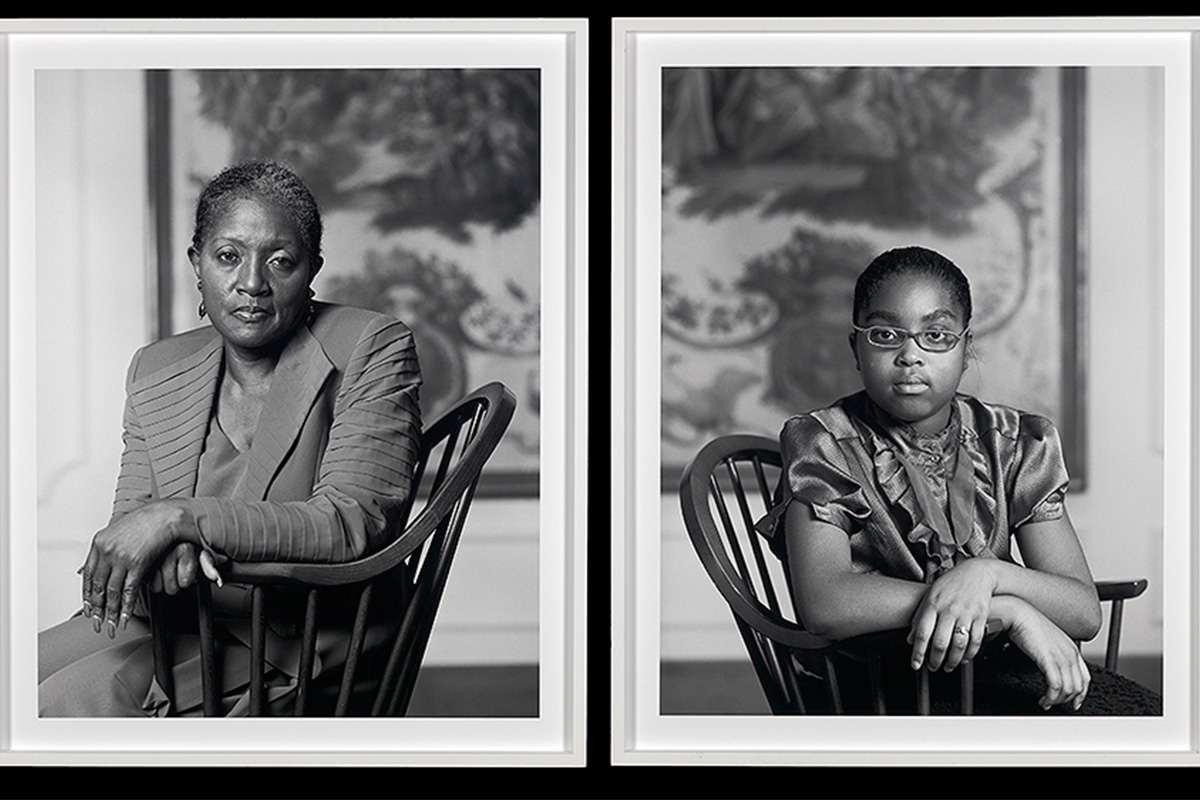
In the Aftermath: Humanizing Mass Tragedy
Caitlyn Brabo '27 is a Cunningham Center Assistant at the Smith College Museum of Art
By Caitlyn Brabo
On October 25, 2023, in a bowling alley in Lewiston, Maine, a mass shooter killed 18 people and injured 13. This tragedy is far too common and normalized by the media in the United States, being the 35th public shooting this year and the 569th since 2006, according to the Northeastern and Associated Press mass killing database. Countering the desensitization of widespread shootings, artists like Dawoud Bey emphasize the humanity of those who have been slain, and help us have difficult conversations regarding healing from mass tragedy.
Bey’s Betty Selvage and Faith Speights from The Birmingham Project was acquired by SCMA in November 2013 and is currently on view in the exhibition Sum of its Parts: Multi Panel Works on Paper from the Collection. This diptych is part of a larger series of photographs Bey completed to commemorate and remember the lives lost during the Birmingham Bombing on September 15, 1963. Published on the 55th anniversary of the fatal event, Bey decided to go to various essential locations to the local community, including the 16th Street Baptist Church, to photograph over 75 black men, women, and children from the neighboring community where the Birmingham Bombings happened. Each diptych depicts a community member the same age as those killed, as well as the age they would have been had they lived.
While creating the series, Bey gave the sitters little to no direction, prioritizing authenticity and instinct in his sitters. The photographs are printed in black and white, giving the subjects a timeless aura. While the sitters in each diptych were strangers to each other, a relationship is easily drawn between the older and younger sitters. Together they invoke the lost potential of lives stripped away by tragedy. Here, Betty Selvage’s kind, tired eyes mimic those of her younger counterpart Faith Speights. Their crossed arms and slightly furrowed brows tell a story about personality and life. Often relegated to victimhood, we are encouraged by The Birmingham Project to imagine the lives these children lived before they were turned into news headlines, how they might have grown up, and the futures they might have had.
Bey emphasizes that this was his intention: “I wanted to make them real, tangible. These girls are an abstraction to people–the mythic four girls–we lose sight of their humanity.”
Through The Birmingham Project, Bey is able to inspire conversation regarding the difficult topic of collective grief and the loss of life at the hands of mass shootings. While the general public typically responds with outrage and sadness, Bey offers his audience a way to acknowledge the humanity of the victims beyond initial thoughts and prayers. In this way, art can spark conversations about how communities can heal together and cultivate action together.
Above the desire to spark conversation and action, Bey seeks to remind us of a simple truth: those lost in tragedy are human. Bey emphasizes the goal of the series, commenting, “I want them to reclaim their right to see, be seen…”